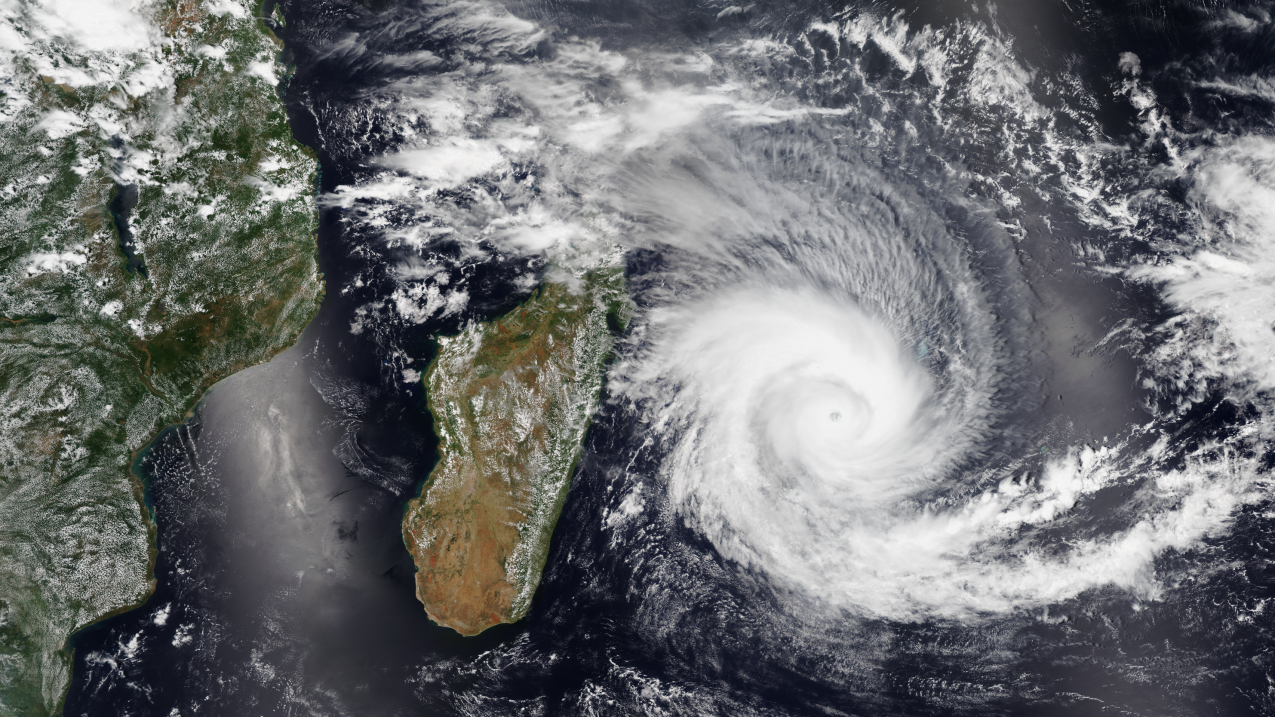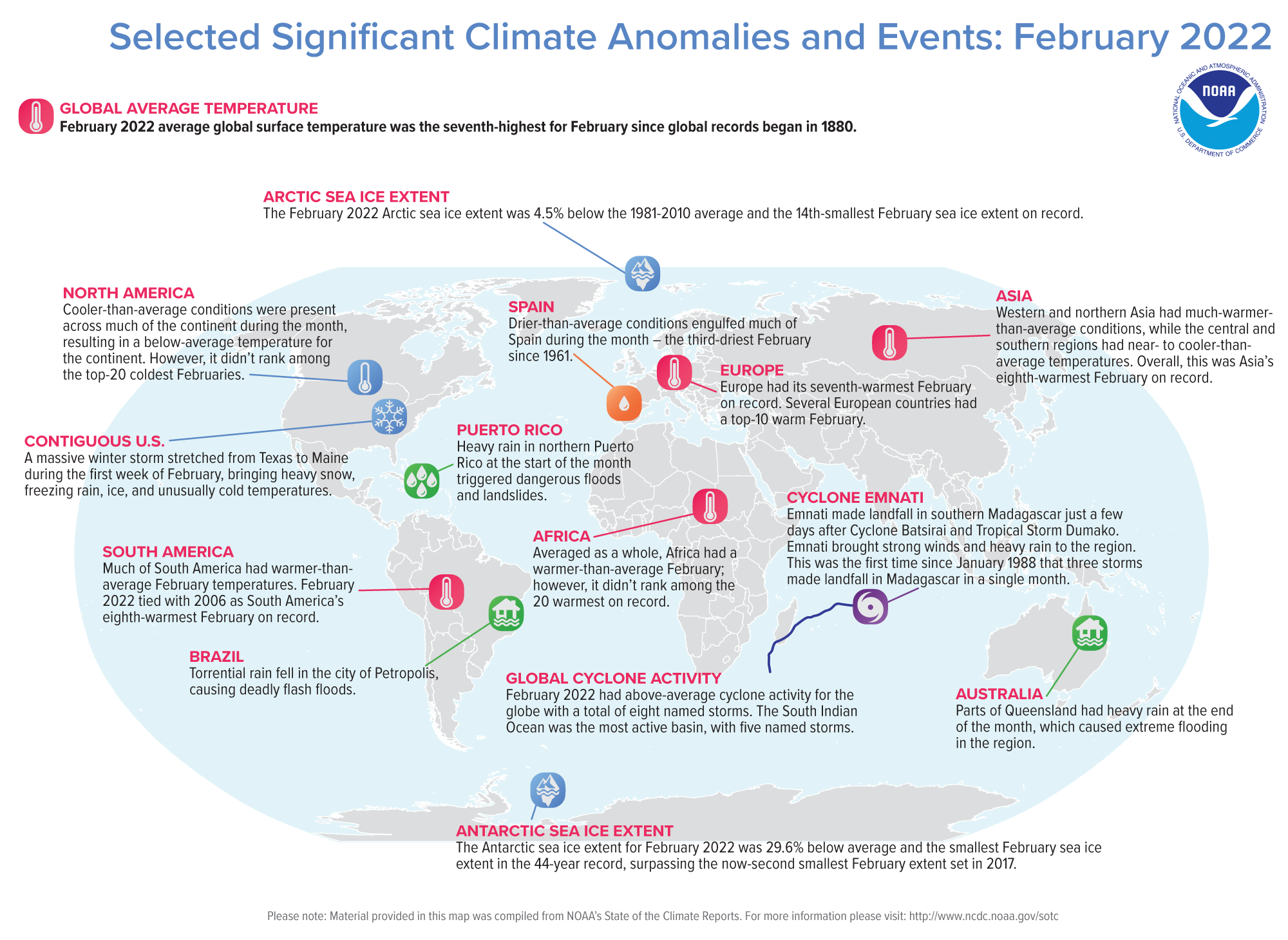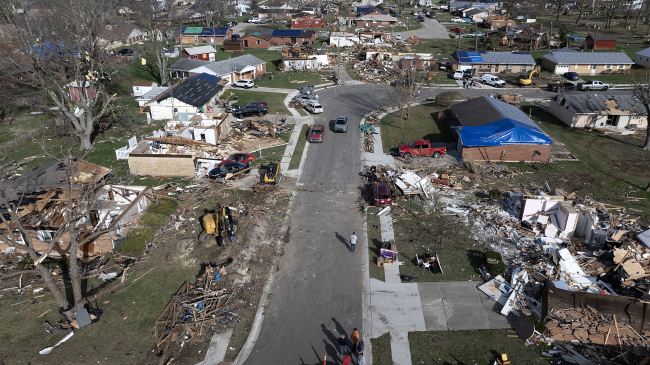Antarctic sea ice coverage shrank to a record low

A view of Tropical Cyclone Batsirai approaching Madagascar as seen from the NOAA-20 satellite on February 2, 2022. Batsirai was one of three tropical cyclones that battered Madagascar in February 2022. (Image credit: NOAA)
The world continued its relatively warm start to 2022, with February ranking as the seventh-warmest February in the climate record.
Last month also wrapped up an extremely warm December – February season for the planet, according to scientists from NOAA’s National Centers for Environmental Information.
Here’s more from NOAA’s latest monthly global climate report:
Climate by the numbers
February 2022 | Season (December 2021 – February 2022)
The February global land and ocean surface temperature was 1.46 degrees F (0.81 of a degree C) above the 20th-century average, ranking as the seventh-warmest February in the climate record.
Regionally, Asia, Europe and South America saw average temperatures that ranked among their eight-warmest Februaries on record. North America was the only continent to have a below-average February temperature.
Looking at the three-month season, the global surface temperature was 1.51 degrees F (0.84 of a degree C) above the 20th-century average of 53.8 degrees F (12.1 degrees C), tying with 2015 as the world’s fifth-warmest such period on record.
December through February was also the Northern Hemisphere’s sixth-warmest meteorological winter and the Southern Hemisphere’s seventh-warmest meteorological summer on record.

Other notable takeaways from the report
- Polar sea ice was scant. Antarctic sea ice extent (coverage) for the month was the smallest on record — 830,000 square miles (29.6%) below average — surpassing the previous smallest February extent set in 2017. The February 2022 Arctic sea ice extent was 4.5% below average and the 14th-smallest February extent in the 44-year record.
- A warm start to 2022 so far. The year-to-date (January and February) global surface temperature was the sixth highest on record. According to NCEI’s Global Annual Temperature Rankings Outlook, it is virtually certain (> 99.0%) that 2022 will rank among the 10-warmest years on record.
- Tropical cyclone activity saw a significant uptick. The globe had an above-average number of tropical cyclones in February, with a total of eight named storms, four of which intensified to become hurricanes (also known as cyclones or typhoons in parts of the Eastern Hemisphere). The South Indian Ocean was the most active ocean basin with five named storms, tying with February 2000 and February 2007 for the most named storms since 1981.
More > Access NOAA’s latest climate report and download the images.
Media contact
John Bateman, (202) 424-0929



